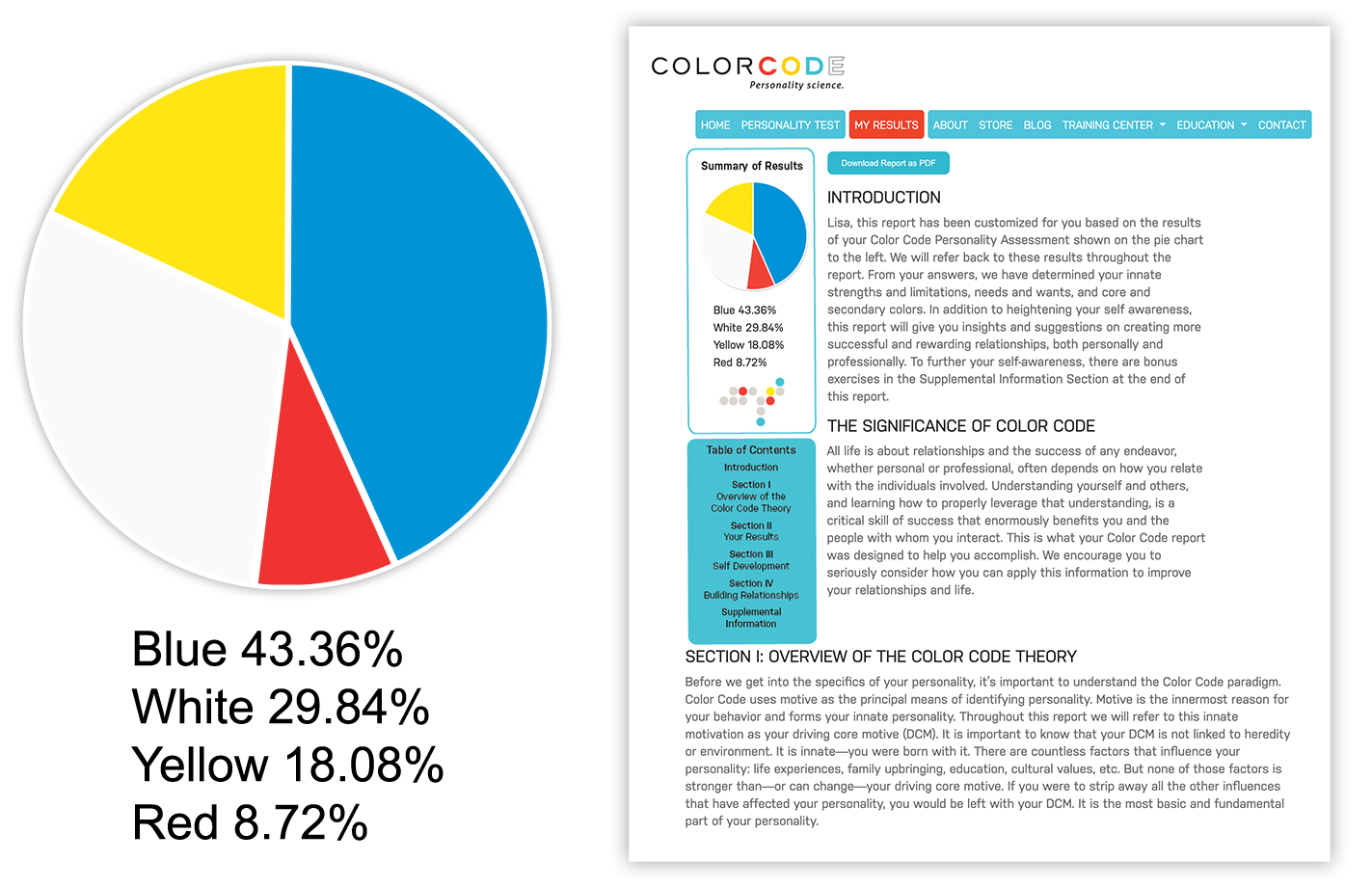Intimidating is a LIMITATION of the RED personality in the Color Code Personality Assessment.
Intimidating
"Leadership is based on inspiration, not domination; on cooperation, not intimidation."― William Arthur Ward
Lisa Ulshafer /  Do you find that people are intimidated by you? Do they seem uncomfortable or uneasy around you? Are you struggling to build meaningful relationships because of it? Being intimidating can create a negative impact on personal and professional relationships. It can cause others to feel uncomfortable, unimportant, or inferior. Intimidation often stems from the desire to exert control over others, but it can also come from a lack of self-confidence.
Do you find that people are intimidated by you? Do they seem uncomfortable or uneasy around you? Are you struggling to build meaningful relationships because of it? Being intimidating can create a negative impact on personal and professional relationships. It can cause others to feel uncomfortable, unimportant, or inferior. Intimidation often stems from the desire to exert control over others, but it can also come from a lack of self-confidence.
Here are some common signs that you may be intimidating:
- People tend to avoid disagreeing with you or expressing a different opinion.
- You often find that people are hesitant or nervous around you.
- You tend to dominate conversations or meetings, not allowing others to speak or share their thoughts.
- People often seem uncomfortable or on edge when they're around you.
- You have a tendency to raise your voice or use aggressive body language to make your point.
- You often come across as unapproachable or uninviting, making it hard for others to connect with you.
- People may perceive you as overly competitive or confrontational.
- You tend to make decisions without seeking input or feedback from others.
- People may perceive you as being judgmental or dismissive of their ideas or opinions.
- You tend to use your position of authority or power to get what you want, even if it means ignoring the needs or opinions of others.
Here are 6 strategies for overcoming being intimidating:
-
Be aware of your body language: Pay attention to your body language and the signals you're sending to others. Avoid crossing your arms or standing too close to others. Instead, try to maintain an open posture and use a friendly tone of voice when speaking.
-
Listen more than you speak: People who are intimidating tend to dominate conversations. Instead, try to listen more than you speak. This can help you to understand others' perspectives and build stronger relationships.
-
Show vulnerability: People who are intimidating often try to project an image of strength and invincibility. However, showing vulnerability can actually make you more relatable and approachable. Share your own struggles and challenges with others, and be open to receiving support and advice.
-
Build trust: People are less likely to be intimidated by someone they trust. Build trust by being reliable, keeping your promises, and following through on commitments.
-
Seek feedback: Ask for feedback from others on how you come across. This can help you to identify areas where you might be coming across as intimidating and make changes.
-
Practice empathy: Try to see things from others' perspectives and understand their feelings and motivations. This can help you to build stronger connections with others and reduce any perceived intimidation.
By choosing to use non-intimidating behaviors, such as kindness, respect, and understanding, one can foster healthy and positive connections with others. Without the use of intimidation, life becomes more inclusive, collaborative, and harmonious. It allows for open communication, active listening, and mutual understanding, leading to enhanced relationships and a sense of trust. Without intimidation, one can create a safe and welcoming environment where others feel valued, heard, and respected. It promotes cooperation, empathy, and teamwork, leading to improved collaboration and problem-solving. Ultimately, a life without intimidation can contribute to a more compassionate, respectful, and fulfilling existence, where interactions are guided by empathy, and meaningful connections are nurtured, fostering personal and collective growth.
Intimidating
― William Arthur Ward
 Do you find that people are intimidated by you? Do they seem uncomfortable or uneasy around you? Are you struggling to build meaningful relationships because of it? Being intimidating can create a negative impact on personal and professional relationships. It can cause others to feel uncomfortable, unimportant, or inferior. Intimidation often stems from the desire to exert control over others, but it can also come from a lack of self-confidence.
Do you find that people are intimidated by you? Do they seem uncomfortable or uneasy around you? Are you struggling to build meaningful relationships because of it? Being intimidating can create a negative impact on personal and professional relationships. It can cause others to feel uncomfortable, unimportant, or inferior. Intimidation often stems from the desire to exert control over others, but it can also come from a lack of self-confidence.
Here are some common signs that you may be intimidating:
- People tend to avoid disagreeing with you or expressing a different opinion.
- You often find that people are hesitant or nervous around you.
- You tend to dominate conversations or meetings, not allowing others to speak or share their thoughts.
- People often seem uncomfortable or on edge when they're around you.
- You have a tendency to raise your voice or use aggressive body language to make your point.
- You often come across as unapproachable or uninviting, making it hard for others to connect with you.
- People may perceive you as overly competitive or confrontational.
- You tend to make decisions without seeking input or feedback from others.
- People may perceive you as being judgmental or dismissive of their ideas or opinions.
- You tend to use your position of authority or power to get what you want, even if it means ignoring the needs or opinions of others.
Here are 6 strategies for overcoming being intimidating:
-
Be aware of your body language: Pay attention to your body language and the signals you're sending to others. Avoid crossing your arms or standing too close to others. Instead, try to maintain an open posture and use a friendly tone of voice when speaking.
-
Listen more than you speak: People who are intimidating tend to dominate conversations. Instead, try to listen more than you speak. This can help you to understand others' perspectives and build stronger relationships.
-
Show vulnerability: People who are intimidating often try to project an image of strength and invincibility. However, showing vulnerability can actually make you more relatable and approachable. Share your own struggles and challenges with others, and be open to receiving support and advice.
-
Build trust: People are less likely to be intimidated by someone they trust. Build trust by being reliable, keeping your promises, and following through on commitments.
-
Seek feedback: Ask for feedback from others on how you come across. This can help you to identify areas where you might be coming across as intimidating and make changes.
-
Practice empathy: Try to see things from others' perspectives and understand their feelings and motivations. This can help you to build stronger connections with others and reduce any perceived intimidation.
By choosing to use non-intimidating behaviors, such as kindness, respect, and understanding, one can foster healthy and positive connections with others. Without the use of intimidation, life becomes more inclusive, collaborative, and harmonious. It allows for open communication, active listening, and mutual understanding, leading to enhanced relationships and a sense of trust. Without intimidation, one can create a safe and welcoming environment where others feel valued, heard, and respected. It promotes cooperation, empathy, and teamwork, leading to improved collaboration and problem-solving. Ultimately, a life without intimidation can contribute to a more compassionate, respectful, and fulfilling existence, where interactions are guided by empathy, and meaningful connections are nurtured, fostering personal and collective growth.
Change can be challenging and difficult to do all on your own.
Contact Lisa today to make the kind of changes in your life that lift you to your greatest potential.

2 Free Template Downloads
#1. Developing Strengths & Becoming Charactered
#2. Removing My Limitations
Fill out the form below to receive your free templates:
Click to explore the Strengths & Limitations of each color:
FULL Analysis
A completely customized report that is designed to fully analyze your personality and provide bonus tools to help you on your way to personal development.
Results Include:
- Pie chart showing you what you scored in all 4 colors.
- Comprehensive analysis containing 35+ page report with customized content that describes your individual personality style in depth.
- List of your innate strengths and limitations.
- A breakdown of secondary colors and how they affect your personality.
- Throughout are videos, activities and other tools embedded to help you more fully understand your results.



